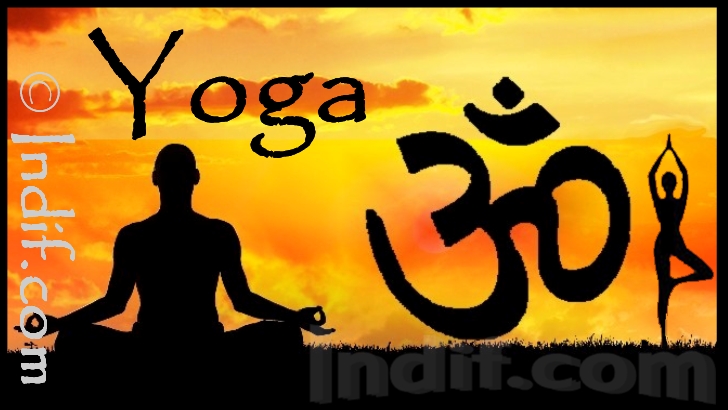The word "yoga" derives from the Sanskrit word "yeung" and means "union or join." The name Yoga comes from a Hindu philosophy used to attain spiritual insight and harmony, but generally refers in common use to a system of exercises as well as now a days system of medicine that is practiced as part of this discipline.
Benefits of Yoga:
Yoga benefits the body, mind, and spirit by teaching self-control through a series of postures and exercises called asanas, as well as through breathing, relaxation, and meditation techniques. Yoga is a scientific system of physical and mental practices that originated in India more than three thousand years ago. Its purpose is to help each one of us achieve our highest potential and to experience enduring health and happiness. With yoga, we can extend our healthy, productive years far beyond the accepted norm and, at the same time, improve the quality of our lives.
Yoga brings discipline in life. We work upon our
system rather than our symptoms. The therapeutic use of
yoga helps in removing toxins from body and nourishing
our body with the support of right food.
Practicing yoga can also relieve stress. The movement, breathing, and meditation of yoga result in relaxing the body and quieting the mind. Many use yoga for that purpose alone. Yoga can help prevent and treat a range of ailments. Yoga is generally low-impact and safe for healthy people when practiced appropriately under the guidance of a well-trained instructor.
Branches of Yoga:
There are several different branches of yoga, known as "paths". The most popular Hatha yoga is a physical discipline that focuses on asanas, or poses. Most yoga studios and fitness clubs teach some type of Hatha yoga -- and there are many different types.
Ananda yoga: Ananda means bliss, this branch of yoga focuses on the easy poses. This gentle yoga developed by Swami Kriyananda, focuses on slow stretches, flexibility, and deep breathing. It is easy, and natural, to integrate the Ananda approach with other hatha yoga practices, because it is just that: an approach.
Ashtanga yoga: Ashtanga yoga is a vigorous, fast-paced yoga that helps to build flexibility, strength, concentration, and stamina. When doing Ashtanga yoga, a person moves quickly through a set of predetermined poses while remaining focused on deep breathing.
Bikram yoga: Named after Bikram Choudhary, Bikram yoga is also known as "Hot Yoga." It is practiced in rooms that may be heated to more than 100 degrees Fahrenheit (37.8 degrees Celsius).
Kundalini yoga: Kundalini yoga uses
poses, deep breathing and various other breathing
techniques, chanting, and meditation.
Kripala yoga: Kripala Yoga blends postures with awareness, breath, relaxation and meditation techniques to deliver you into the present moment. Kripala yoga develops the. body, mind and spirit in a compassionate way.
Iyengar yoga: This type of yoga focuses on precise poses and participants use benches, ropes, mats, blocks, and chairs. Special emphasis is placed on holding certain postures for several minutes.
Power yoga: Similar to Ashtanga yoga, this is also a very fast-paced form of yoga that improves flexibility and stamina by completing poses. This type of yoga involves vigorous workout to purify and strengthen the body.
Yoga Asana (Physical Exercise):
Yoga asana is the best method to keep the body healthy, disease free, strung, bright and active. Yoga asanas are the exercise for the whole body; this makes the body flexible, active and fresh. It imparts strength, agility and soundness to the nervous system. They should be practiced under the guidance of a guru and should he followed strictly with proper care. The person practicing yoga asana should follow certain rules, diet, regimen, proper sleep, proper nest etc.
Pranayam (Breathing Exercise) :
Pranayam comprises of breathing exercises which provide oxygenated blood to the entire body and its organs. Pranayam comsists of two things PRANA and AYAM. It is a method to control the flow of energy of vital air in the body by stretching and regulating the lungs in a controlled manner. By Yog asanas, we remove the distortions and disabilities of the physical body and bring it into discipline. However Pranayama influences the subtle and the physical bodies in a greater measure than Yogsanas do and that too in a perceptible manner. Some of the benefits of pranayam are - it improves immunity; helps in eradicating toxins from the body; exercises internal organs; helps in making mind stable and tranquil; it fixes the system, not the symptoms; increases good harmones etc.
General Rules for Yoga :
- Time - morning or evening . Preferably, morning is the best time for yoga and it is always better to practice yoga where there is abundant clean air.
- Practice Yoga in a clean, calm and secluded enviornment.
- Clothing should be loose and comfortable.
- Yoga should be practiced empty stomach. Atleast 4 hours after food, and after usual morning activities.
- All exercises should be done at a medium pace.
- Relax for 10 seconds at least after each yoga exercise.
- May take a shower 30 minutes after Yoga, preferably with cold water.
- May eat or drink 30 minutes after exercise.
- Breathing should be through the nose, not through the mouth. It should be as deep and rhythmical as possible.
- Women should use caution if they wish to do yoga postures during the first day or two of the menstrual period.
Concentration of the mind is in a way common to both Knowledge and Yoga. Yoga aims at union of the individual with the universal, the Reality. This Reality cannot be new. It must exist even now, and it does exist.
- Ramana MaharshiYoga is an art and science of living.
-Indra DeviWhen I consider the deeper meaning of yoga, I realize it's about a lot more than simply performing a variety of postures on a mat.
-Carre OtisYoga teaches us to cure what need not be endured and endure what cannot be cured. - B.K.S.









